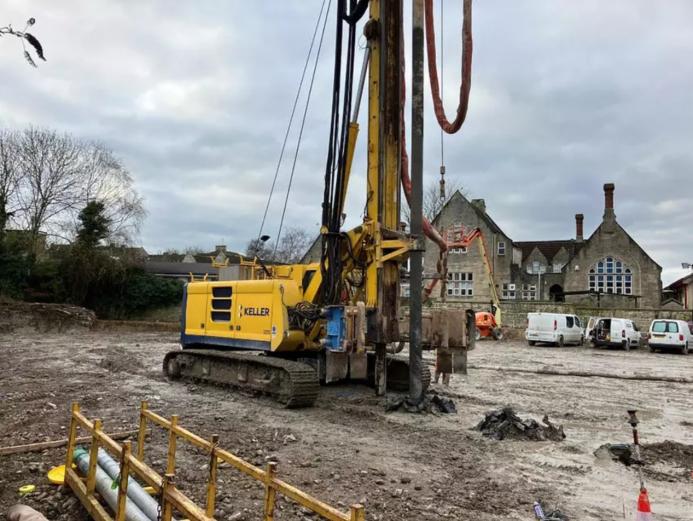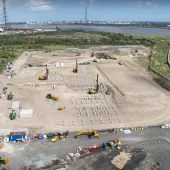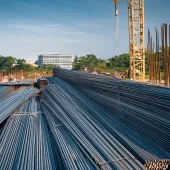Cast in-situ solution for storage facility
The site was underlain by 3.0m of very low strength Alluvial soils within which mass fill foundations and vibro stone column treatment would not be viable, particularly for the proposed column loadings of up to 2200kN that required support.
The solution saw 566, 7.5m long, 300mm diameter rigid inclusions (RI) installed using displacement cast in-situ construction methods. The works were designed to achieve up to 175kN/m2 for the foundations and 40kN/m2 for the floor slab areas.
The installation works were completed in less than three weeks and facilitated simply reinforced shallow footings.
For the floor slab, Keller installed and cropped the columns to permit the installation of a ground-bearing slab which could be cast directly onto the rolled and compacted surface of the load distribution layer.
The thickness of the load distribution layer was just 400mm and this doubled up as the piling mat for the Keller rig.
Rigid inclusions are a ground improvement method using high deformation modulus columns constructed through compressible soils to reduce settlement and increase bearing capactiy. This allows the use of shallow foundations to support structures on compressible soils.
Soil reinforcement with rigid inclusions reduces settlements very efficiently (with a reduction factor in the range of 3 to 8) and structure construction works can, in most cases, start immediately after ground improvement.
Ground improvement efficiency depends on the stiffness relationship between the soil and the columns. Load from the structure is distributed to the soil and columns via a load transfer platform or rigid foundation.
Rigid inclusions can be used in all construction sectors, including industrial and commercial buildings, embankments for roads and rail, storage tanks and terminals, residential buildings, warehouses, industrial flooring, and wind turbines.
They are applied under footings with or without a load distribution layer (LTP). They can also be used under floor slabs and embankments.
Based on the initial compressibility of the soil the spacing between the rigid inclusions is adapted to suit the allowable settlement of the project.







